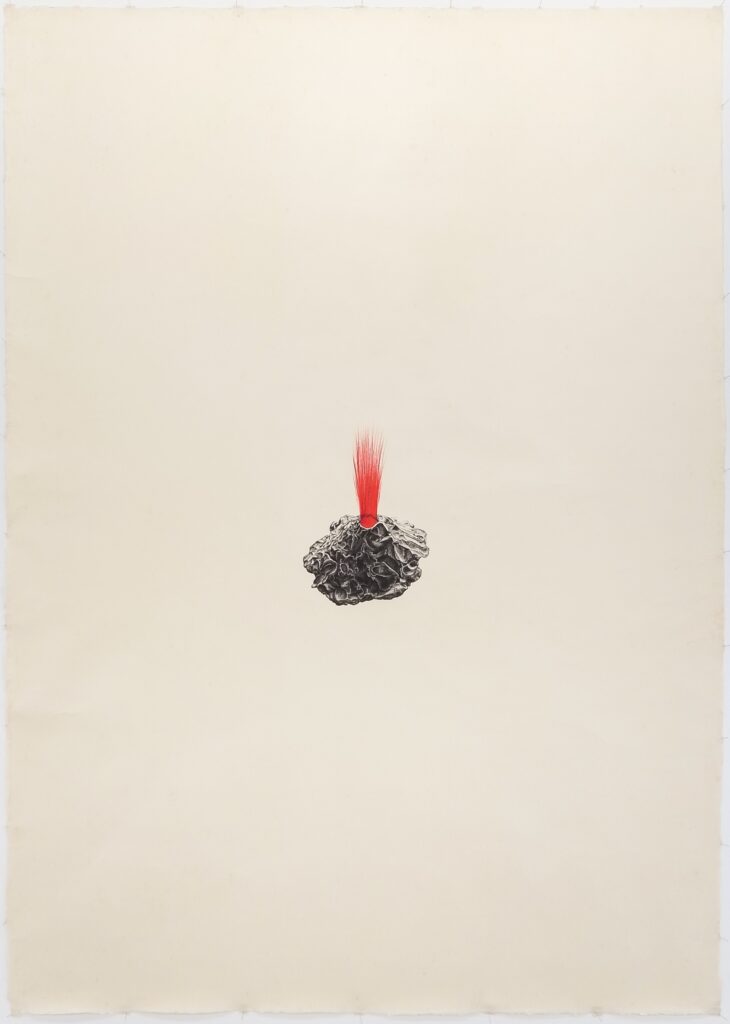
1986, Pigment ink pen and colored pencil on Torinoko Japanese paper, 213.5×153cm
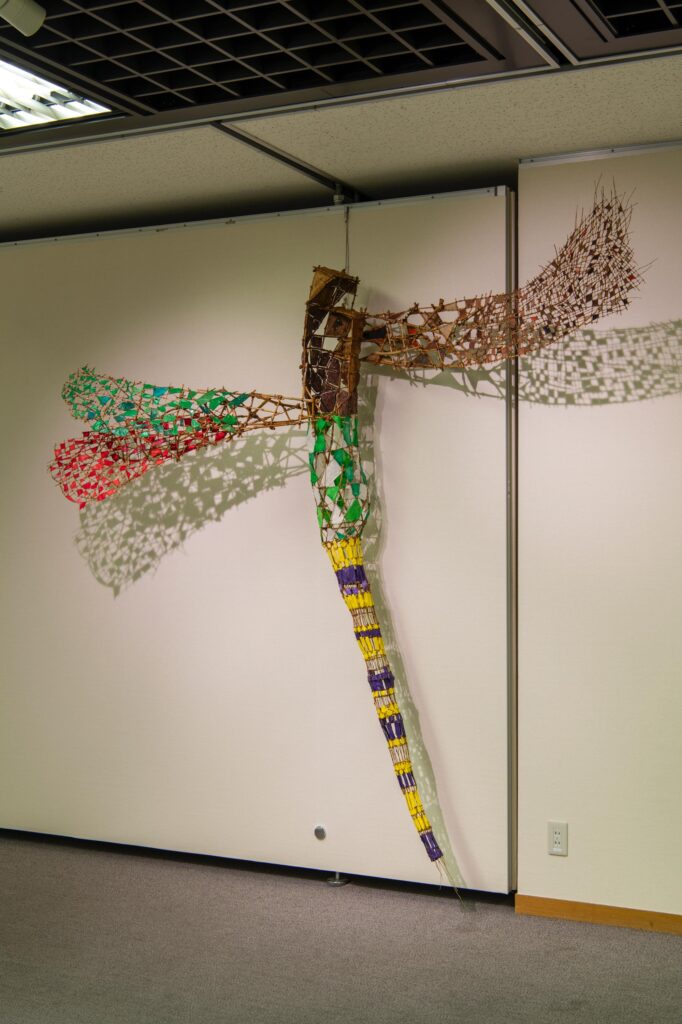
2023, Bamboo, Paper, Copper wire, Acrylic, 251×231×50cm, Photo by Kazuo Fukunaga
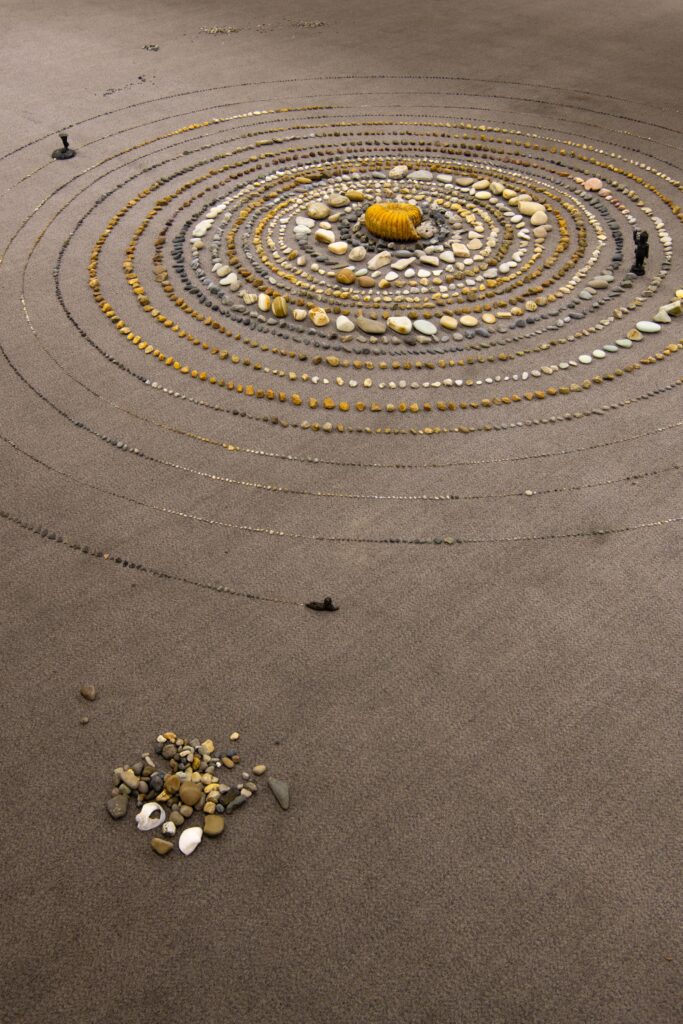
2024, Fossils, Ammonites, Bronzes, Fieldstone, Stone tools, Arrowheads, dimensions variable
A Diagrammatic History of the Brain
Dates|June 25 – July 15, 2024
Venue|MEM map
Open Hours|13:00 – 19:00 [June 25th (Tue.): Talk event will be held and admission will close at 17:30]
Closed|Mondays (Open if Monday is a national holiday. Closed next weekday)
Telephone|+81-3-6459-3205
Three-person talk event
Dates | June 25, 2024 18:30-20:00
Participants | Toshiaki Minemura (Art Critic), Hori Kosai (Artist), Kitayama Yoshio
Venue | MEM
Fee | ¥1200
Capacity | 20 persons by reservation only
Japanese version only.
This event will be live-streamed and will be available on MEM’s website.
After the talk event, there will be an opening reception.
↓↓会場参加ご予約↓↓

※会場参加者には当日、会場にてアーカイブ動画の視聴リンクもご案内いたします。
↓↓ライブ配信、アーカイブ動画視聴チケット↓↓

※アーカイブ動画は7月22日(月)までご覧いただけます。
Yoshio Kitayama was immersed in drawing from an early age and pursued painting as a self-taught artist. However, he began to realize that adulthood diminished the vitality and freedom of his lines as he became more and more conscious of himself, which led him to abandon painting for a time. At the end of the 1970s, he eschewed contour drawing and produced relief works on wooden panels using twigs, bamboo, wire, and thread. Eventually, the lines integral to his combines were thrust outwards into space, developing into three-dimensional works of bamboo and Japanese paper. Regarding these three-dimensional works, Kitayama states, “I have attempted to give form to the possibilities of art based on the child’s dynamic yet undifferentiated impression of the world. They are an investigation of how humans acquire their understanding of the world, thereby creating their worldview.” The selection, combination, and linkage of found materials is a tactile practice of conceiving form and is also concerned with the ‘vast world of the unconscious.’
In 1982, Kitayama exhibited large-scale three-dimensional works in the Japan Pavilion at the 40th Venice Biennale, the same year he returned to painting. For Kitayama, painting is a “multifaceted world of excessive consciousness;” upon returning to the medium, he found that he could only paint small icons on large blank surfaces. This composition mapped a diagrammatic relationship, representing his challenge against the entirety of art history. The small scale of his figures conveyed his “trepidation that this was all that (he) could express.” While simultaneously a pictorial relationship between the ground and figure, these works eventually led to two series of paintings: Icon, in which Kitayama reinterprets his hand-sculpted clay human figures into ink drawings on paper, and Universe, abstract all-over paintings.
Recently, Kitayama has expanded his scope beyond paintings and three-dimensional works, developing installations with fossils, antiquities, old newspapers, books, and dolls, which are exhibited alongside his works.
This exhibition will include Kitayama’s new works and trace the evolution of his production across three artistic modalities: painting, three-dimensional assemblage, and installation.

























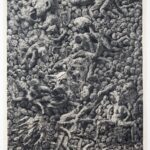 Yoshio Kitayama | History = Reason ( ) Emotion
Yoshio Kitayama | History = Reason ( ) Emotion 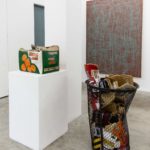 On Mono, Koto and Body – Six Perspectives
On Mono, Koto and Body – Six Perspectives 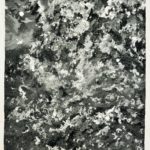 Yoshio Kitayama “JIKEN”
Yoshio Kitayama “JIKEN” 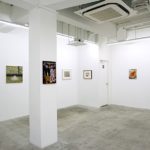 Here / Hereafter – Visionaries 2 –
Here / Hereafter – Visionaries 2 –